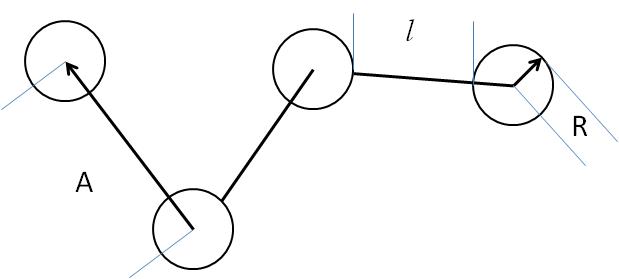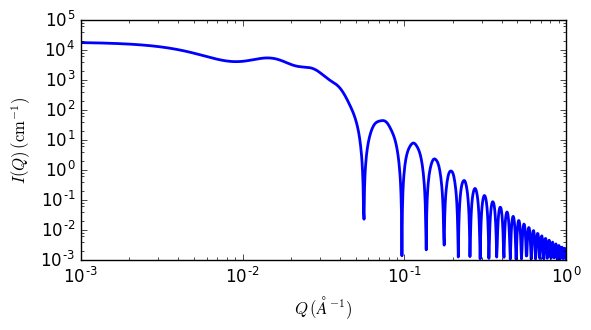pearl_necklace
Colloidal spheres chained together with no preferential orientation
| Parameter | Description | Units | Default value |
|---|---|---|---|
| scale | Source intensity | None | 1 |
| background | Source background | cm-1 | 0.001 |
| radius | Mean radius of the chained spheres | Å | 80 |
| edge_sep | Mean separation of chained particles | Å | 350 |
| thick_string | Thickness of the chain linkage | Å | 2.5 |
| num_pearls | Number of pearls in the necklace (must be integer) | none | 3 |
| sld | Scattering length density of the chained spheres | 10-6Å-2 | 1 |
| sld_string | Scattering length density of the chain linkage | 10-6Å-2 | 1 |
| sld_solvent | Scattering length density of the solvent | 10-6Å-2 | 6.3 |
The returned value is scaled to units of cm-1 sr-1, absolute scale.
This model provides the form factor for a pearl necklace composed of two elements: N pearls (homogeneous spheres of radius R) freely jointed by M rods (like strings - with a total mass Mw = M * mr + N * ms, and the string segment length (or edge separation) l (= A - 2R)). A is the center-to-center pearl separation distance.

Fig. 27 Pearl Necklace schematic
Definition
The output of the scattering intensity function for the pearl_necklace is given by (Schweins, 2004)
where
where the mass mi is (SLDi - SLDsolvent) * (volume of the N pearls/rods). V is the total volume of the necklace.
The 2D scattering intensity is the same as \(P(q)\) above, regardless of the orientation of the q vector.
The returned value is scaled to units of cm-1 and the parameters of the pearl_necklace model are the following
NB: num_pearls must be an integer.

Fig. 28 1D plot corresponding to the default parameters of the model.
References
R Schweins and K Huber, Particle Scattering Factor of Pearl Necklace Chains, Macromol. Symp. 211 (2004) 25-42 2004